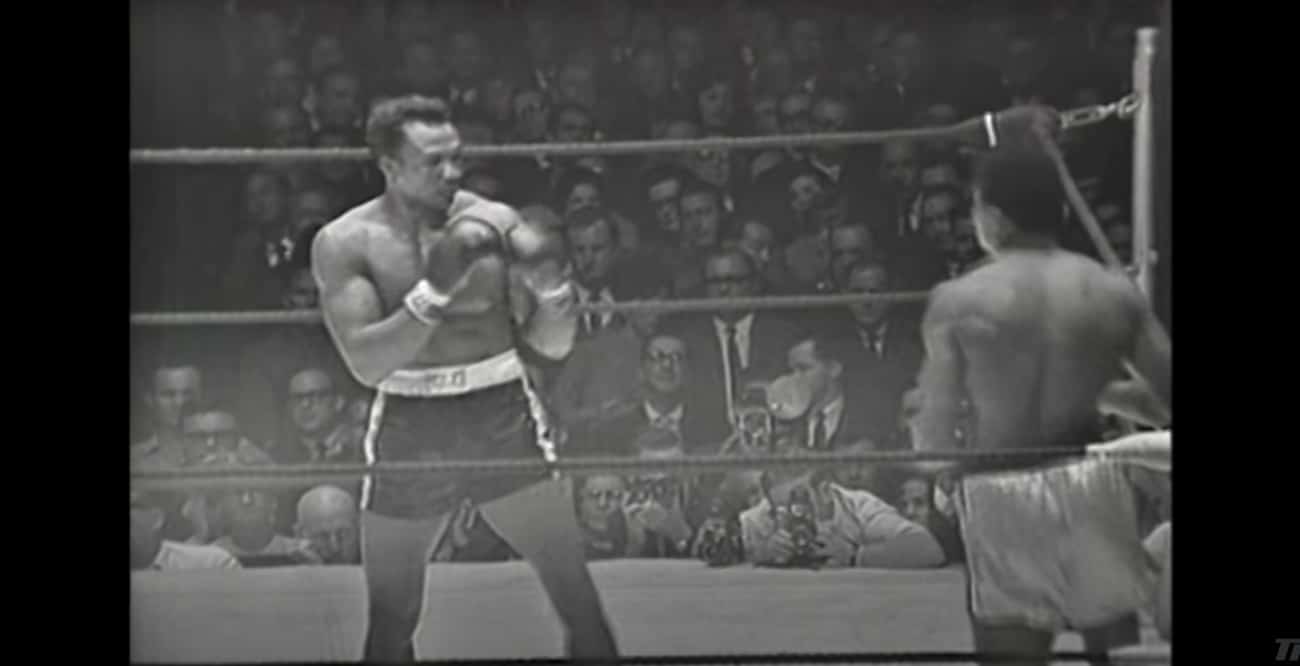Cleveland Williams could so easily be looked at as three things: one of the best heavyweights never to have won a world title, one of the hardest-hitting big men of the sport ever, and one of the unluckiest fighters who ever lived. September 10 of 1999 was the day Williams, known as “Big Cat” during his long ring career, lost his life. Williams had been knocked down by a car a week earlier, with him later dying in a Houston hospital.
Had Williams not been such a courageous fighter, he may well have lost his life long before then.
Going pro in March of 1949, the man born in Griffin, Georgia was still in his teens as he set about earning a living as a fighter. Blessed with a strong and impressive physique, Williams, who had a short amateur career, soon showed that he was a natural. Standing an imposing 6’3” and sporting a rock-hard collection of muscles, Williams was a born puncher. Quite astonishingly, Williams would fight as a pro for almost 25 years.
And “Big Cat” – he was given the nickname due to his languid, almost effortless-looking fighting style – fought the absolute best. Indeed, he fought the best from more than one era. Did I say Williams was unlucky? Imagine having to fight, in your biggest fights, a peak Sonny Liston (twice), and a peak Muhammad Ali. Williams, who was taken out by another pure banger in Bob Satterfield, this in June of 1954, was 47-2-1 when he met Liston the first time. Williams had been close to getting a shot at heavyweight champ Floyd Patterson, who instead chose to fight a relatively unknown Swedish contender named Ingemar Johansson.
In April of 1959, after a short and violent slugfest that tested the chin of both men, Liston knocked Williams out in the third. Plenty of fighters would not have gone anywhere near Liston again, but Williams, who had little choice, found himself back in the ring with Liston the following March. This time, the rampaging Liston scored a second round win.
Williams, a huge attraction in Houston, fought on and, in April of 1962, he stopped Ernie Terrell in seven for what was his biggest win at that time. A draw with the tough and tricky Eddie Machen followed, before Terrell got his revenge over Williams, this via split decision win.
The following year, Williams found himself in the wrong place at the wrong time. Driving his car near Houston on the evening of November 29, Williams was pulled over by cop Dale Witten. Witten said he had suspected Williams of being drunk, and he was also said to be speeding. Williams said, yes, he had been drinking, but he was not drunk. Arrested and placed in Witten’s patrol car, Williams got nervous when he realized where he was being driven to, this a place called Tomball, a town that was said to be “tough on black folks.”
Williams protested, the two men got into a scuffle, and Witten’s gun went off. Williams took a bullet that went through his intestines, lodging in his hip. Williams had suffered terrible damage to his colon and his right kidney. It’s a miracle the fighter didn’t die, and the reason he didn’t die WAS down to a miracle in Cleveland’s eyes. Deeply religious, Williams felt God had spared him.
Dropping something like 60 pounds as he recovered, Williams – who stunned doctors who said he’d never fight again, the bullet remaining in his body – gradually regained his strength and muscle and, in February of 1966, Williams launched a truly inspirational comeback. Before he could take care of business in his first fight back after being shot at point-blank range, Williams was treated to a long and heartfelt ovation given to him by his Houston fans.
Williams reeled off four wins, two by KO, before he was matched with new champ Muhammad Ali. What followed is often described by fight historians as Ali’s finest, most beautifully untouchable ring performance. Williams was no match for the blinding combo of speed and power in Ali’s possession and he was knocked down multiple times before being stopped in the third. Ali scarcely took a single blow in return. Before the fight, Witten had been a visitor in Williams’ dressing room, with both the fighter and the cop agreeing how there were “no hard feelings.”
Williams was no longer the promising fighter he had once been and there must have been, for his team as well as for his fans, a sense of ‘what if?’ by this stage. Still young by today’s standards at age 33, Williams fought on. For over seven years. Williams would be stopped twice by the latest big puncher in Mac Foster, and the past his best “Big Cat” would drop close decisions to Jack O’Halloran (“no human being ever hit me as hard as Cleveland Williams,” the fighter turned actor told the writer one time) and George Chuvalo. Finally, after three wins over so-so fighters, Williams retired with a 82-13-2(62) record, this in October of 1973, almost a decade after he had been shot.
In later life, Williams’ kidneys failed him and he needed dialysis treatment. It was after he had been to the hospital for some treatment that Williams was knocked down by a car, the injuries he sustained taking his life. He was 66 years old.
Williams was a fine fighter and a terrific puncher. He was also a man cursed by a ghastly dose of bad luck.
In 2003 Williams was ranked 49th in Ring Magazine’s list of the 100 greatest punchers of all-time.

